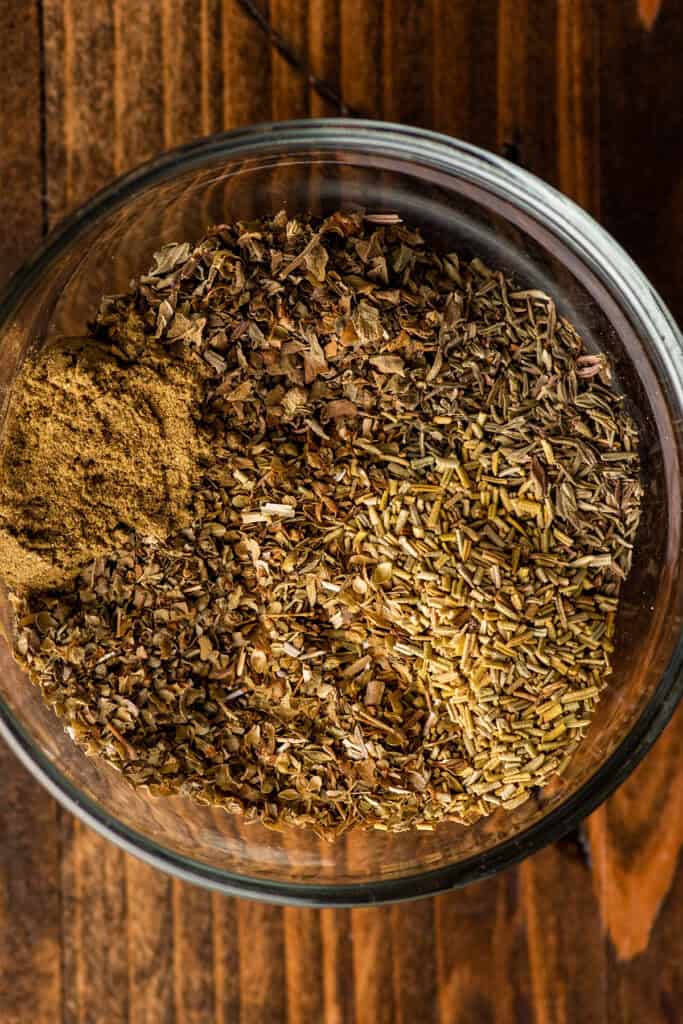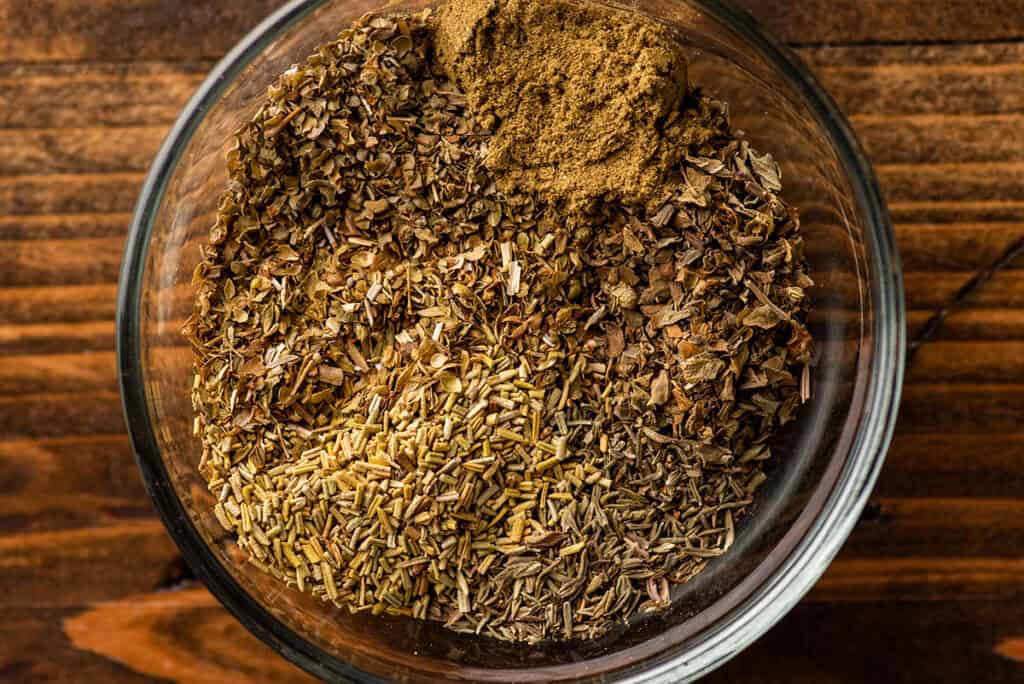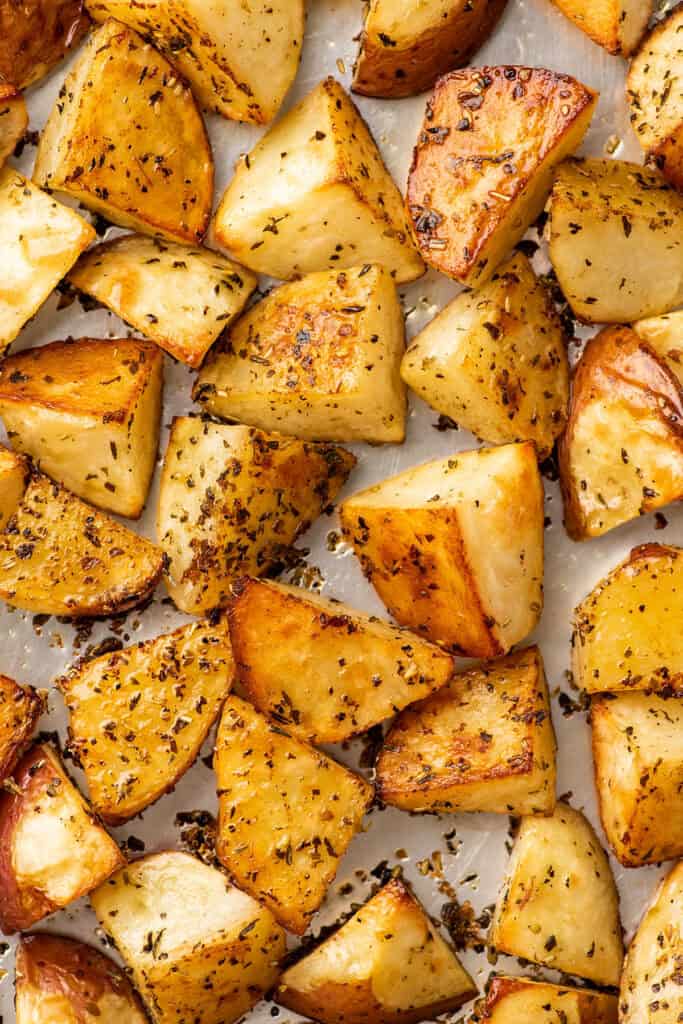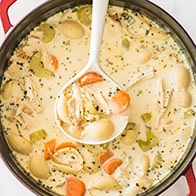A quick and easy recipe for making Italian Seasoning at home.
This super fast and simple recipe for homemade Italian seasoning can be made in under 5 minutes by combining common spices you probably already have in your pantry. Make this once, and you’ll never want to buy grocery store Italian seasoning again!
How to make Italian Seasoning
In the middle of making dinner and you just popped in to grab the recipe? Here you go so you can get back to cooking.
For (a little over) 1 tablespoon of Homemade Italian Seasoning
- 1 teaspoon dried oregano
- 1 teaspoon dried basil
- ½ teaspoon dried thyme
- ½ teaspoon dried rosemary, preferably crushed (optional)
- ½ teaspoon dried marjoram (optional)
- ¼ teaspoon ground sage OR ½ teaspoon rubbed sage (optional)
Mix together all of your spices and store in a small airtight container (small weck jars or recycled empty spice containers work great) for up to 4 months.
What is Italian seasoning?
Italian seasoning is a mixture of dried herbs like basil and oregano that often appear in Italian cooking. And fun fact, though the seasoning’s name would lead you to believe it was created and popularized in Italy, its origins are shrouded in mystery.
Some believe that Italian seasoning was developed by early Italian-American immigrants as they sought to create a taste of home with spices that were not always readily available at that time in America. It is now more commonly believed that Italian seasoning was created by the ancient Greeks and Romans somewhere in the Mediterranean.
Today, the Italian seasoning that you buy at the grocery storeis typically a combo of marjoram, thyme, rosemary, sage, oregano, and basil.
What does it taste like?
Italian seasoning has a piney, earthy and minty flavor from the dried oregano, basil, thyme, and rosemary, while also having a slight sweetness to it. By making your own Italian seasoning at home, you can manipulate the recipe in order to find the best ratio of herbs to meet your exact taste!
FAQ
What can I use instead of Italian seasoning?
If you are missing some of the ingredients from the recipe, don’t worry! The two most important flavors in Italian Seasoning are basil and oregano. Combine them with any of the other recipe ingredients you have available at the time.
Although it will be missing some of the true richness of flavor, it will give you a perfectly passable substitute.
Are oregano and Italian seasoning the same things?
Although oregano is a common ingredient found in Italian seasoning, oregano and Italian seasoning are not the same thing. Italian seasoning is a mixture of herbs which typically includes dried oregano, basil, thyme, and rosemary.
Can I use Italian seasoning in Spaghetti?
Yes! Italian seasoning contains dried basil, thyme and oregano, all of which make an excellent addition to any spaghetti sauce recipe.
Recipes to Make Using Italian Seasoning
Italian seasoning is a great addition to pasta sauces, sprinkled over pork or chicken before cooking or used with roasted vegetables like my crispy Italian Roasted Potatoes.

Recipe Notes
- I recommend using crushed rosemary in your seasoning blend because people don’t always like the texture of full dried rosemary leaves in some recipes, but you can use whatever rosemary you have on hand.
- This recipe calls for ground sage (the sage leaves have been ground to a fine powder). If you would like to use rubbed sage, double the amount of sage used in the recipe.

Homemade Italian Seasoning
Ingredients
- 1 tablespoon dried oregano
- 1 tablespoon dried basil
- 1 ½ teaspoons dried thyme
- 1 ½ teaspoons dried rosemary preferably crushed, optional
- 1 ½ teaspoons dried marjoram optional
- ¾ teaspoon ground sage optional
Instructions
- Mix together all of your spices and store in a small airtight container (small jars or recycled empty spice containers work great) for up to 4 months.
Notes
This post may contain affiliate links, which means I receive a small commission if you make a purchase using them. There is absolutely no additional cost to you.








Leave a Reply